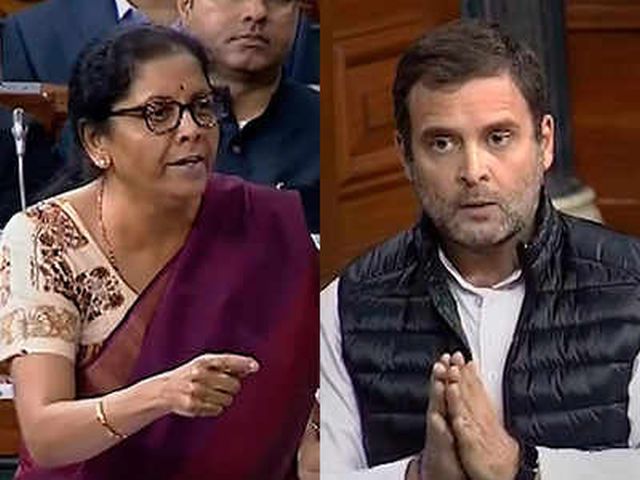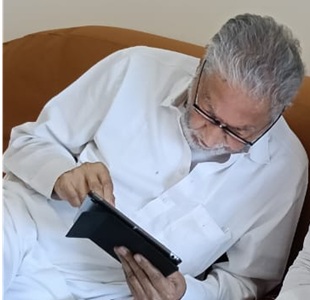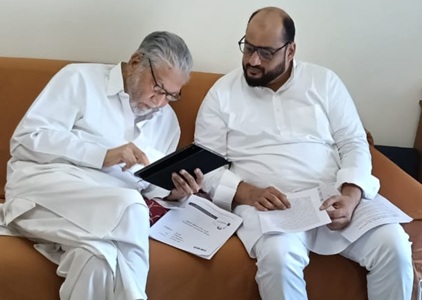By Frank F Islam
In her marathon 2 hours and 46 minutes speech introducing India”s 2020 budget, Finance Minister Nirmala Sitharaman painted an optimistic picture of the Indian economy. She stated at the outset that her budget”s goal is to boost “incomes and enhanceÂ… purchasing power” of the people of India. “Only through higher growth can we achieve that and have our youth gainfully and meaningfully employed,” Sitharaman added.
The Finance Minister”s assessment that higher growth and employment are prerequisites for higher individual incomes and greater purchasing power is spot on. Her optimism is also understandable. Being the stewardess of a $3 trillion economy, one expects her to have confidence in the policies she”s proposing.
However, the budget Sitharaman presented on February 1 was the most comprehensive blueprint submitted by the government of Prime Minister Narendra Modi to date to revive the economy. Examining it contextually, it falls short in a number of areas.
For some time, India has been one of the brightest spots of the global economy. Currently, however, India is in the middle of a major slowdown. The growth rate in the last fiscal quarter was the lowest in 11 years. Last month, the International Monetary Fund downgraded its global growth forecast, putting the blame squarely on India, saying that its woes are dragging the world economy down.
At the moment, India is experiencing its worst employment crisis in 45 years. Several sectors, including financial, real estate and automobile manufacturing, are among the worst-affected. Growth in private consumption in the sixth largest global consumer market has also been a concern for a while.
Given all of this, there were expectations that the budget would advance new major policy initiatives and significant reform measures to kick-start the economy and change the current narrative. This was especially the case because due to the huge mandate Prime Minister Modi received last May the government had plenty of political capital if it wanted to spend some.
However, Sitharaman”s 13,000-word budget speech contained no real bold or big-ticket items. Instead, what was put forward was a classic case of nibbling around the edges.
Not surprisingly, one of the first groups to express disappointment with the budget was India”s investor community, whose negative reaction was reflected in the Sensex losing more than 1,000 points on the budget day. (The losses were erased in subsequent days.)
Three major drivers of economic growth are foreign direct investment (FDI), public and private consumption, and exports. There wasn”t any serious effort on the part of Sitharaman”s budget to boost any one of these.
The finance minister indicated that she is betting on growing inflows of net FDI, an all-time high accumulation of foreign exchange reserves (which stood at $457.5 billion in December), and improvement in World Bank”s Ease of Doing Business, which now stands at 63.
The budget did offer some sops to foreign portfolio investors, such as tax exemptions to sovereign wealth funds that invest in infrastructure and other critical areas. But it is not nearly enough.
While India remains one of the largest recipients of FDI, foreign investments in sectors such as infrastructure are very modest. A primary reason that foreign investors are reluctant to pump in top dollars in infrastructure development is India”s cumbersome land acquisition laws. As long as there is no change in the status quo in that area, FDI in the sector will continue to lag.
Export is another area where the right policies could make India one of the international leaders. Right now, India stands behind even small nations such as Hong Kong and Singapore in this area. For that to change, India”s manufacturing capabilities will have to be upgraded substantially.
The budget did not outline clear plans to revive troubled sectors such as real estate, financial and automobile manufacturing, which have been adversely affecting the economy. For India to turn the corner these sectors have to perform better and do so fast. Their enhanced performance would help stimulate public and private sector consumption.
Another factor compounding India”s economic problems is that one of the unintended consequences of a recent corporate tax cut was diminished tax revenue. Sitharaman”s decision to levy tax on the Indian income of Non-Resident Indians (NRI) appears to be an attempt to address this by expanding the tax base.
However, judging from the reactions from overseas, that move does not appear to have gone well with the NRI community — which is traditionally a big backer of the ruling Bharatiya Janata Party. As a result, it is likely to discourage NRIs from investing in India.
It should be noted that the Budget did have some positives. One of which was a proposal to invest Rs 1.7 trillion to enhance India”s transport infrastructure. That will pay for upgrading key highways, electrifying 27,000 km of railway tracks and building 100 new airports.
Last year, during her first visit to the United States as Finance Finister, Sitharaman said that Prime Minister Modi”s vision of making India a $5 trillion economy in the next five years was achievable. But, her first full-budget as Finance Minister does not provide a sufficient platform for beginning to achieve that vision.
Over the past year, some of the adjectives used by the international media and pundits in the US and Europe to describe the Indian economy were words such as “sagging”, “stuttering” and “floundering”. This commentary continues into this new year. Within hours of the Budget presentation, the Economist in its analysis opined, “It does too little to shore up the flailing economy and failing banks.”
Based upon the foregoing, it must be concluded that with this Budget, the Finance Minister missed an opportunity to change the narrative about the economy and to initiate actions that will make an immediate and positive difference in it. That”s the bad news.
The good news is that a Budget is what it is: a plan for the next 12 months. Governments can and do make course-corrections routinely during a year.
This budget needs course corrections sooner rather later. The right ones addressing the items outlined in this piece and others will set the Indian economy in the proper direction and benefit the Indian people, the Modi administration and the world economy.







0 Comments